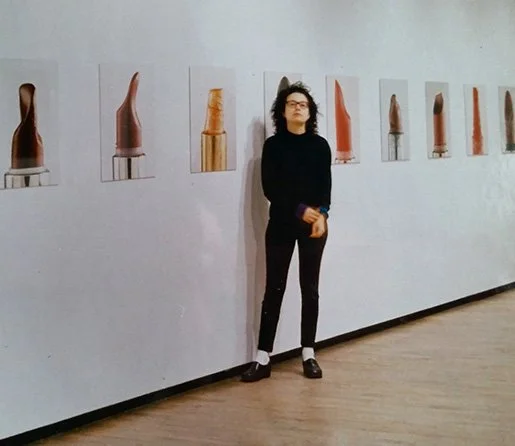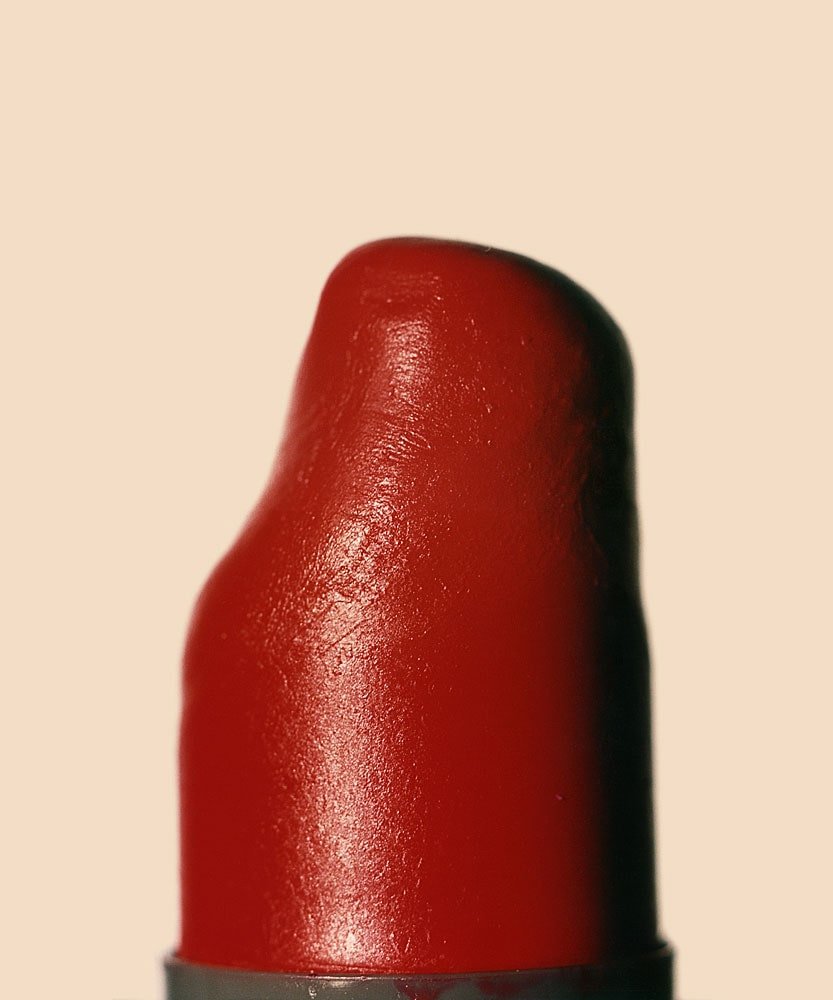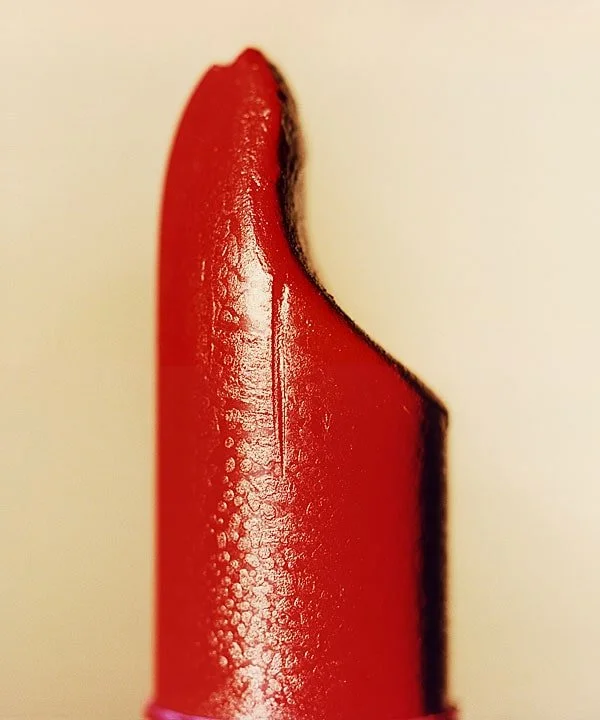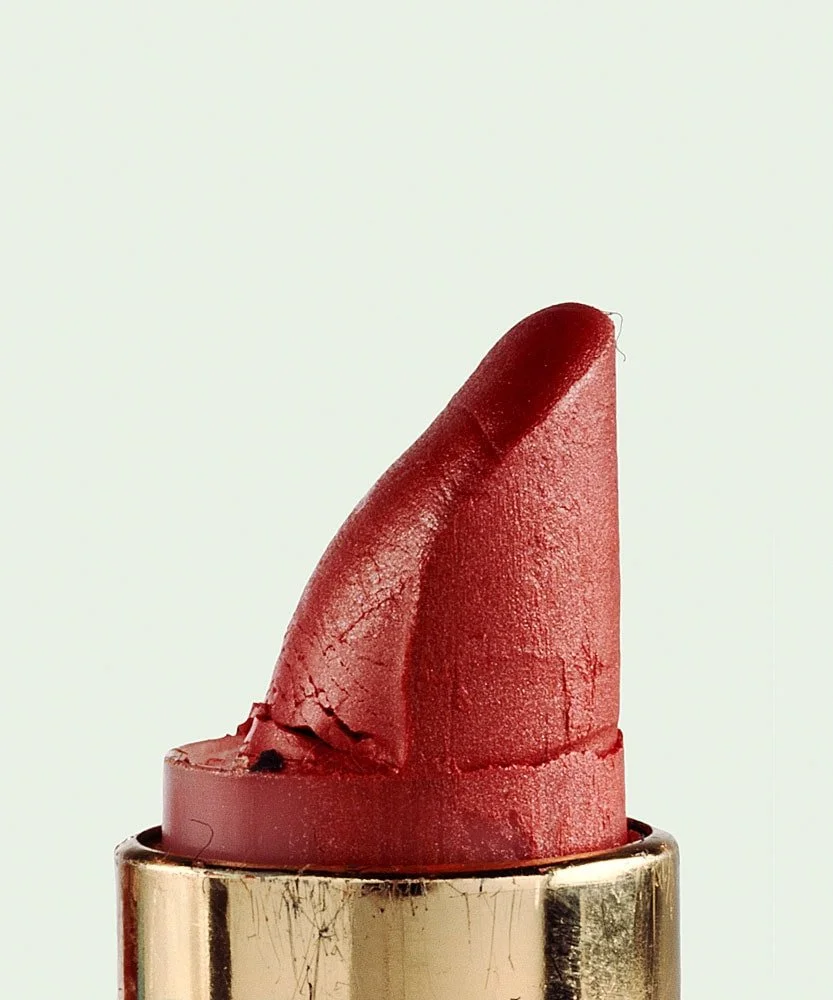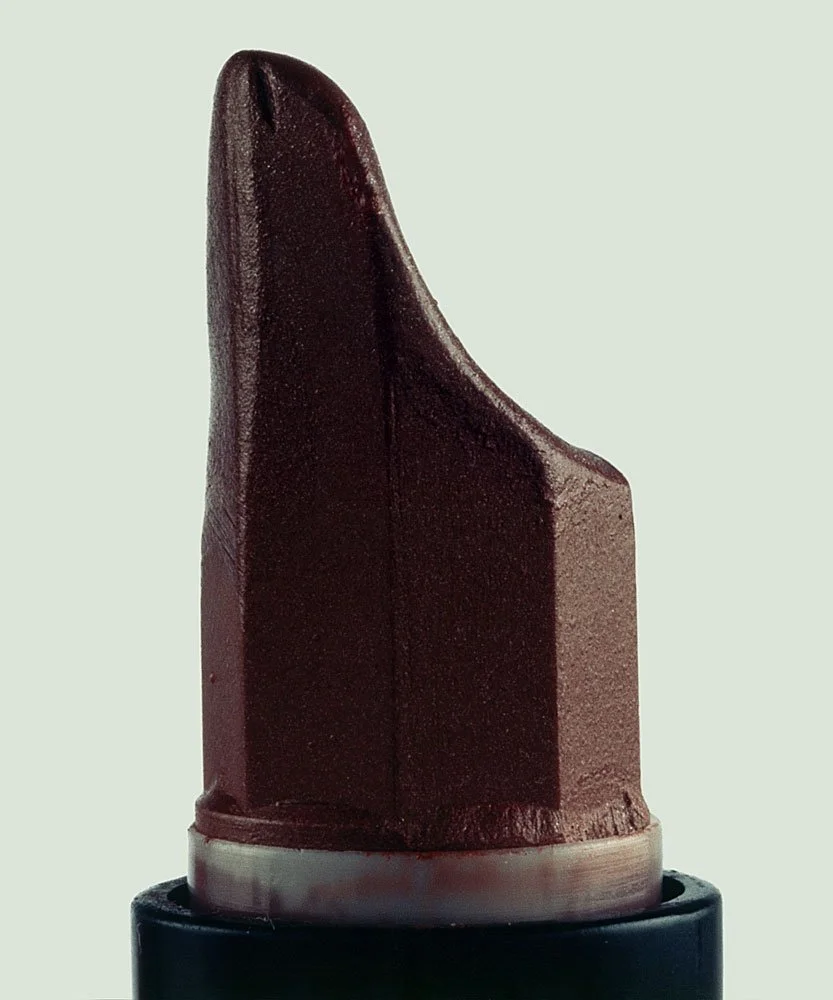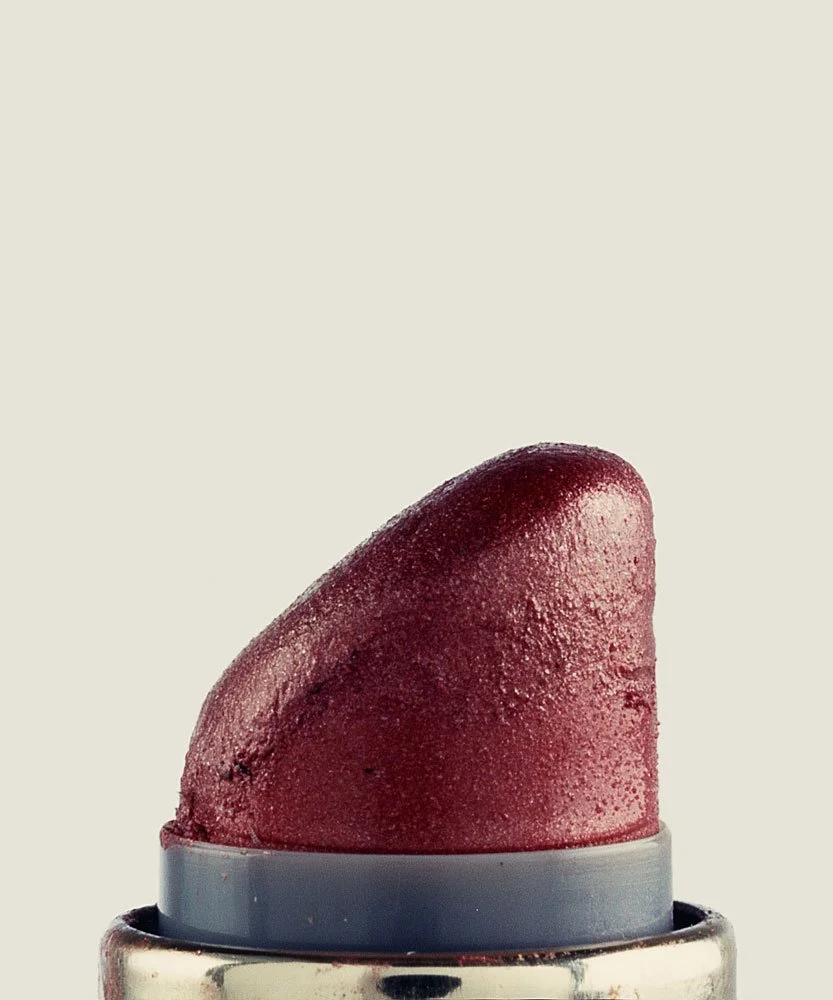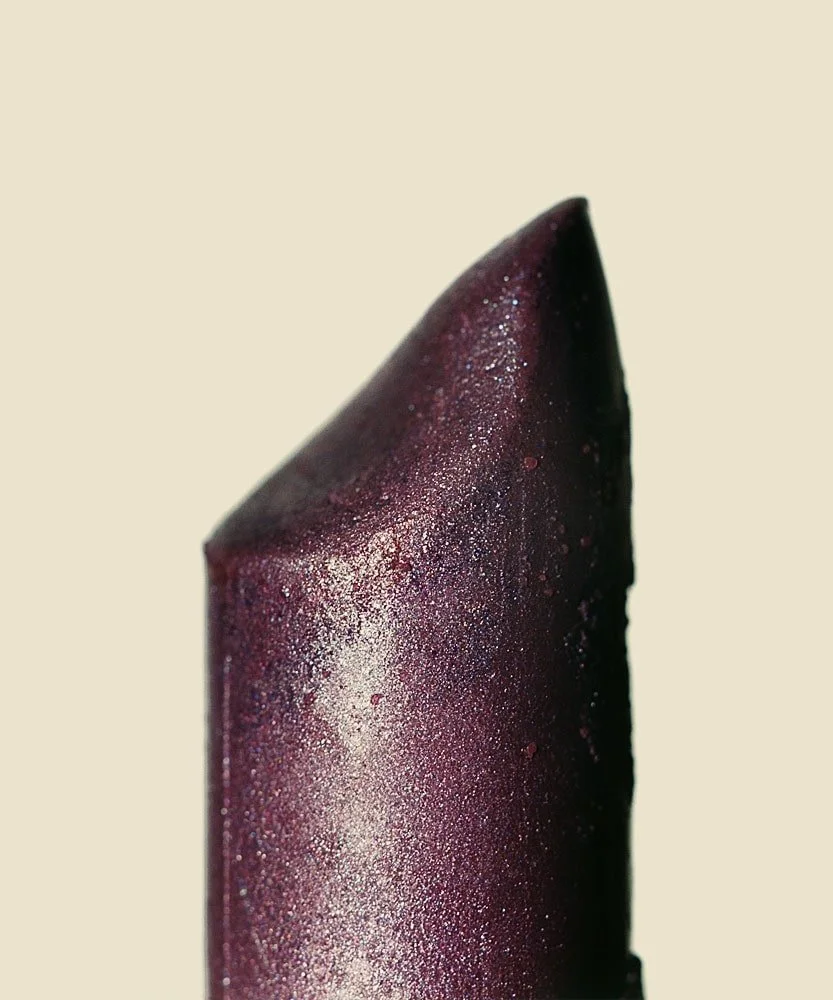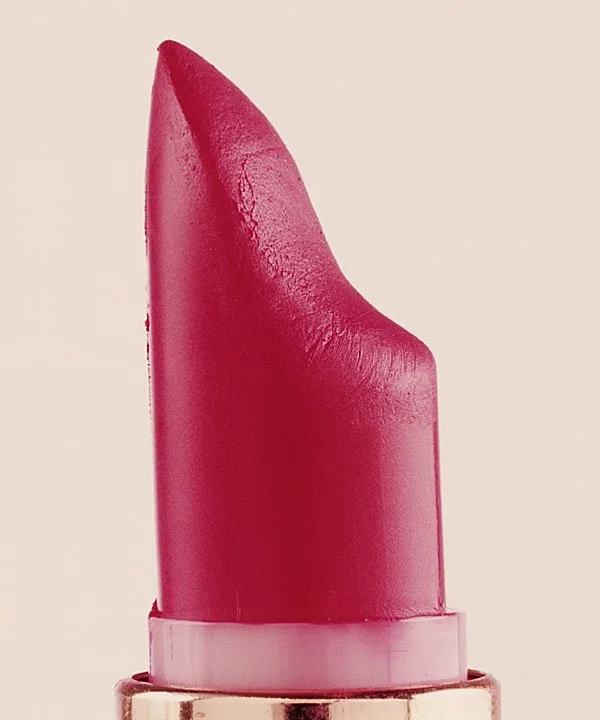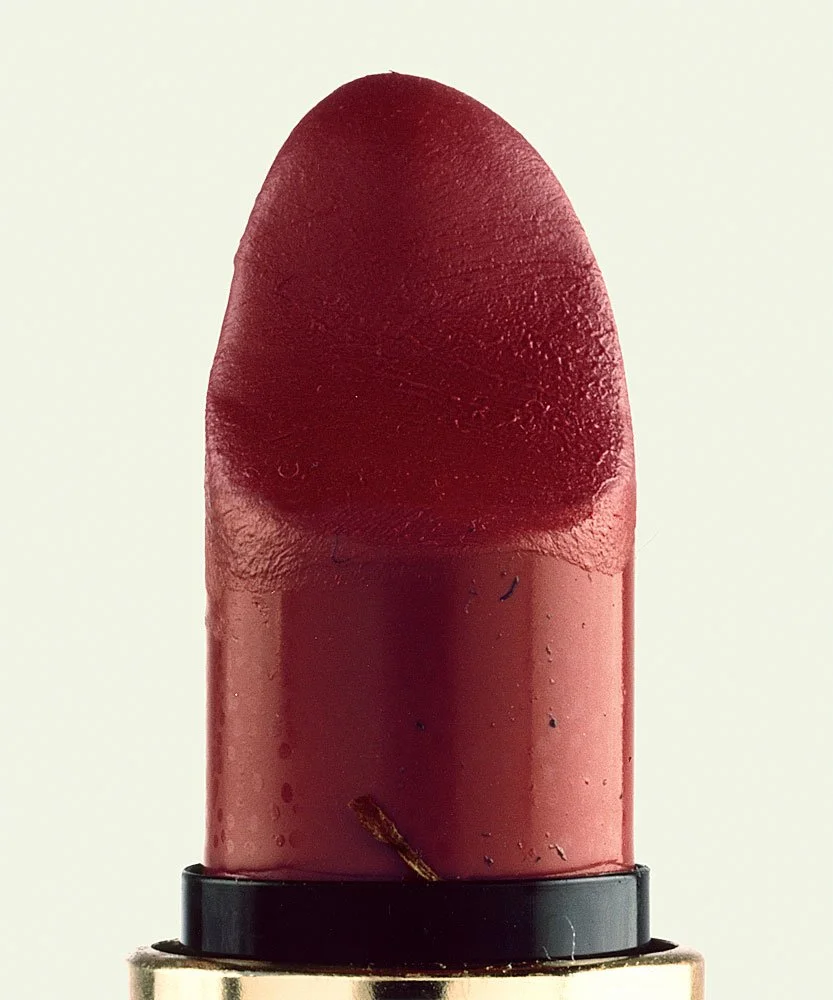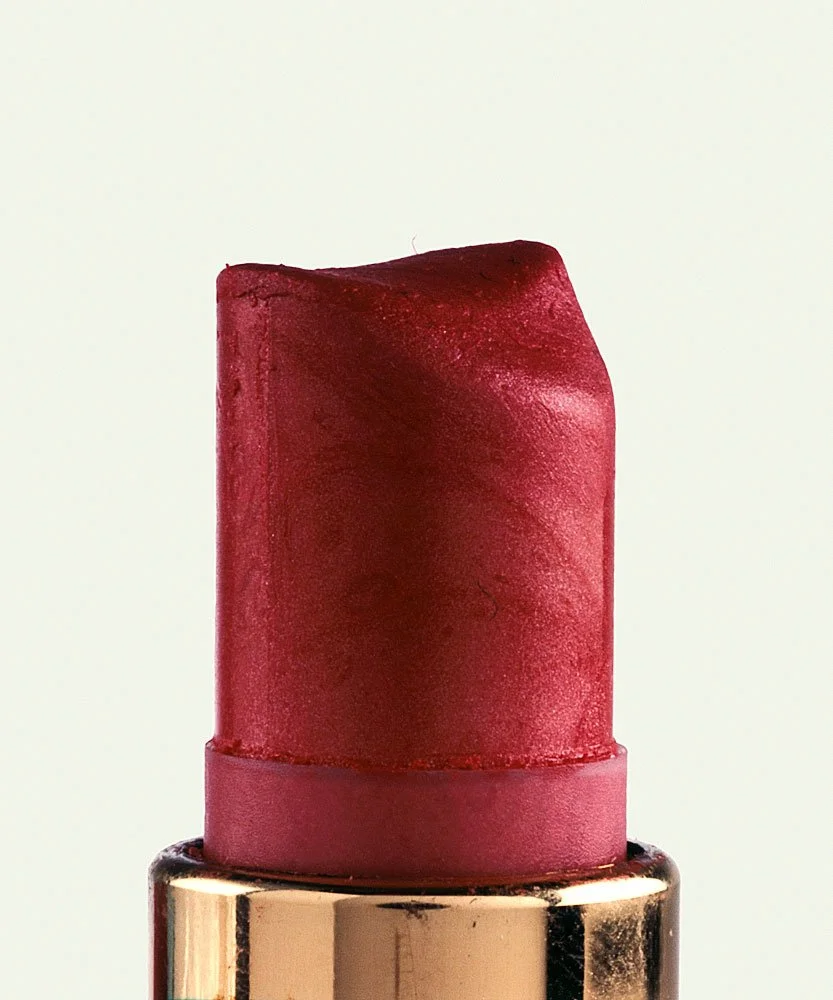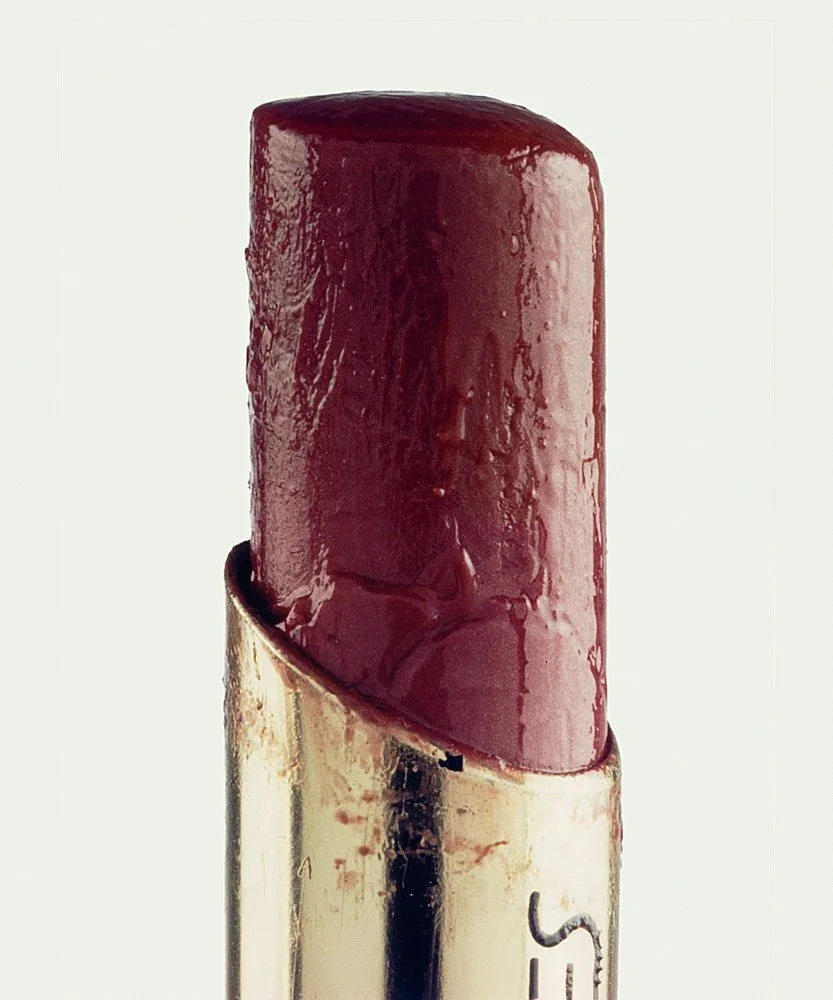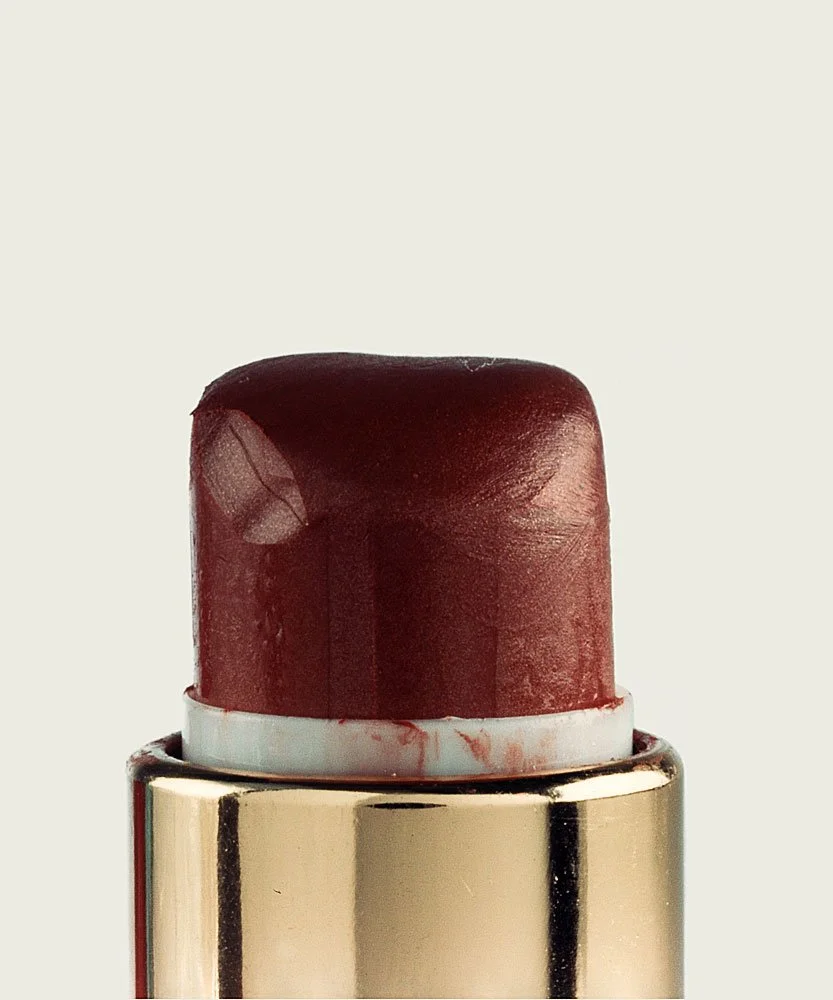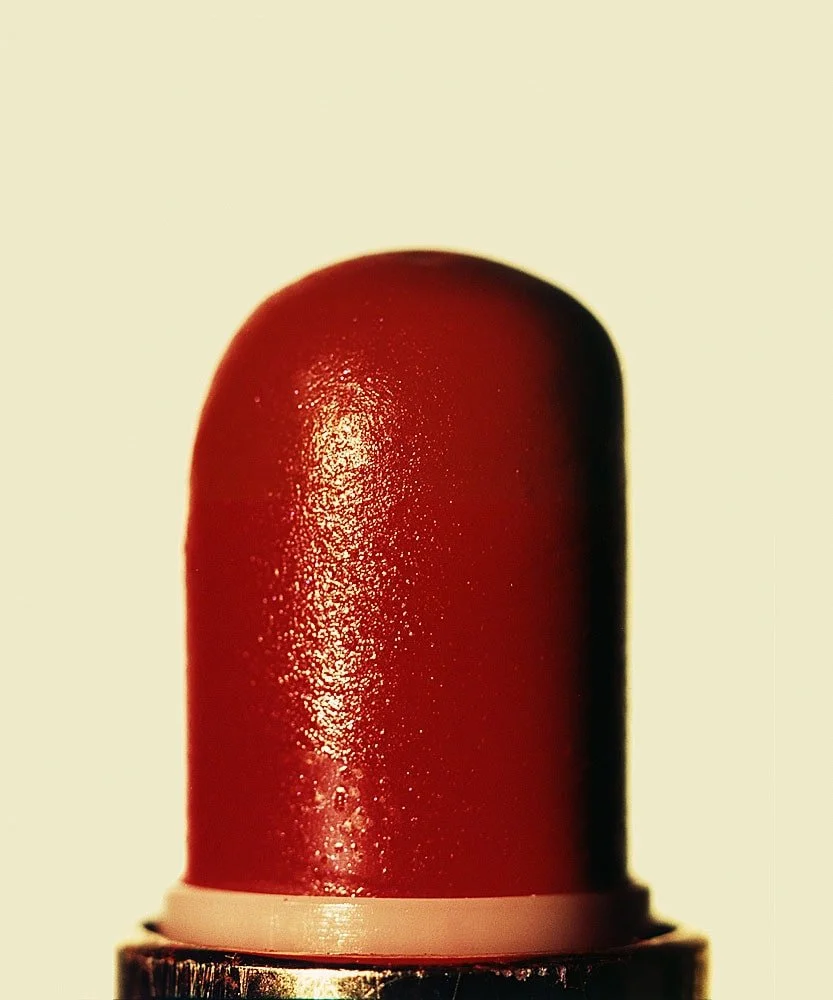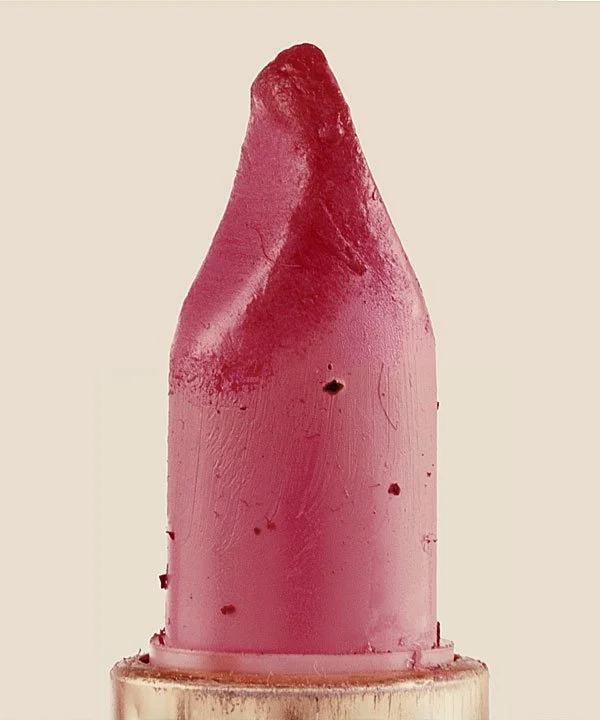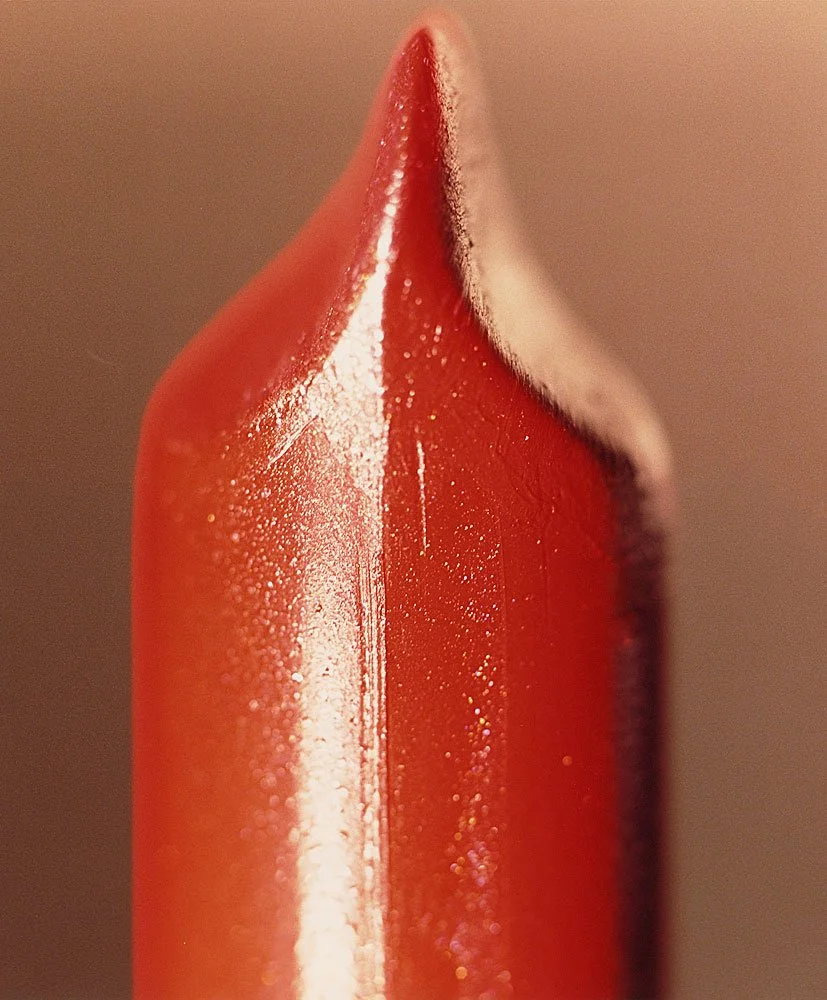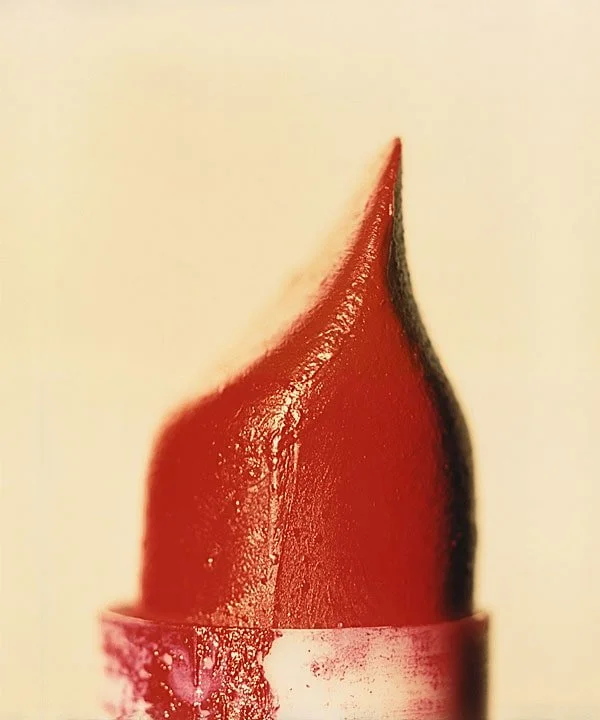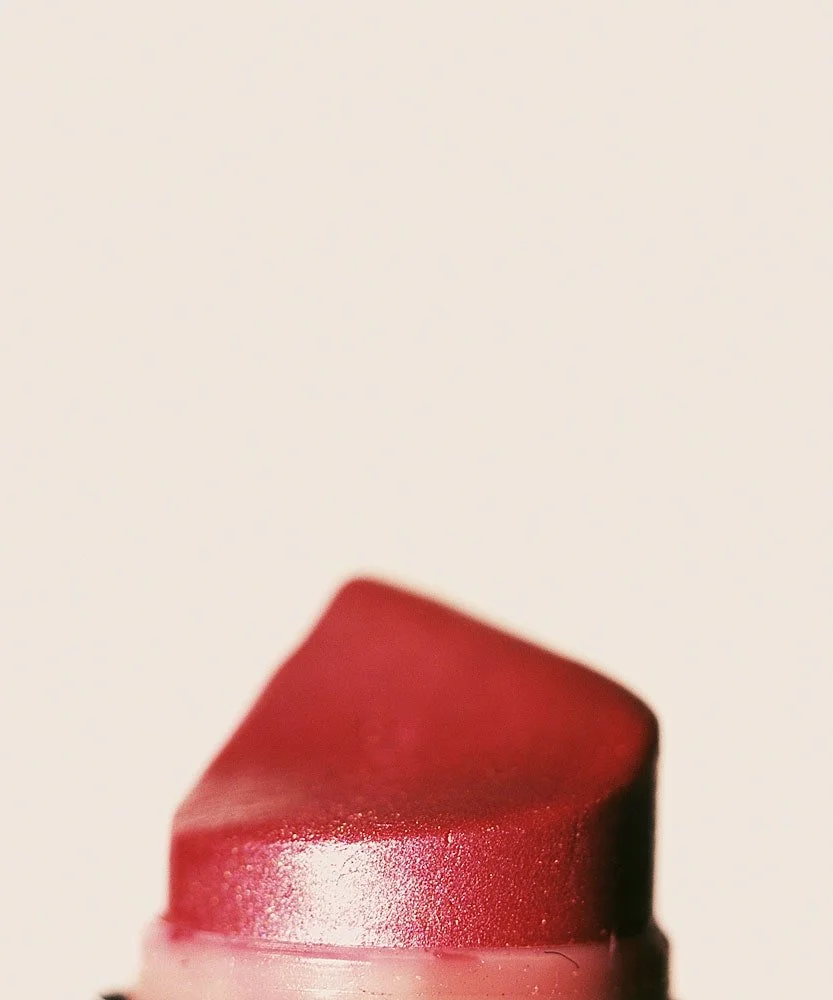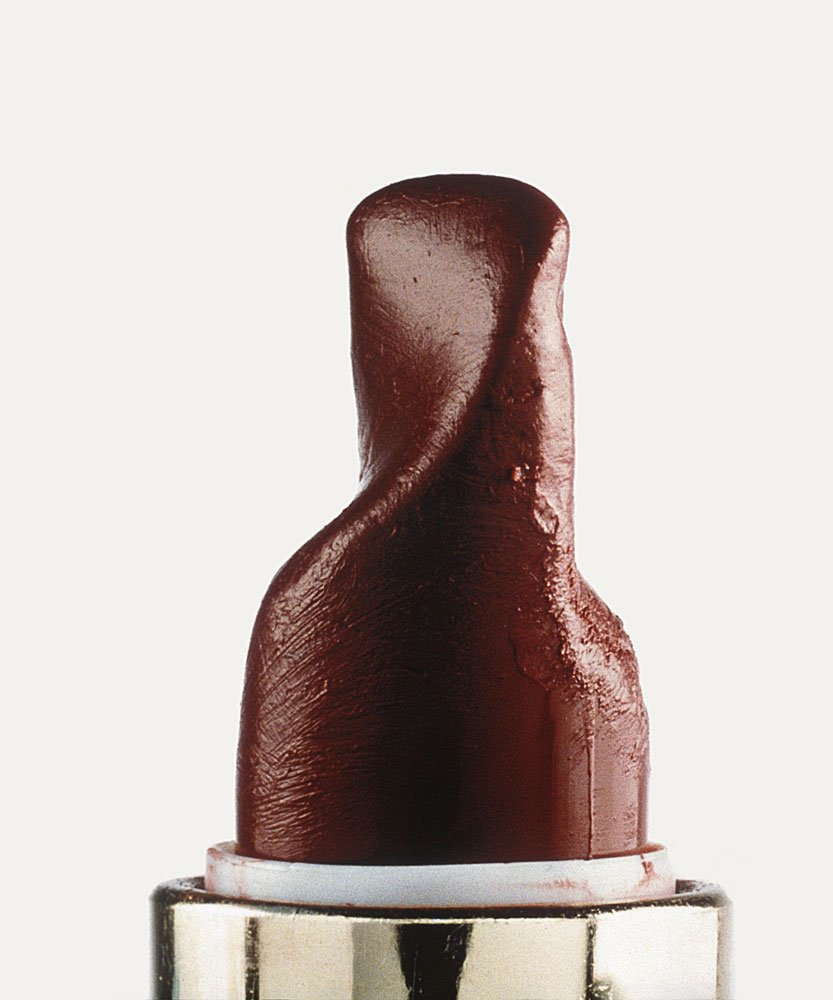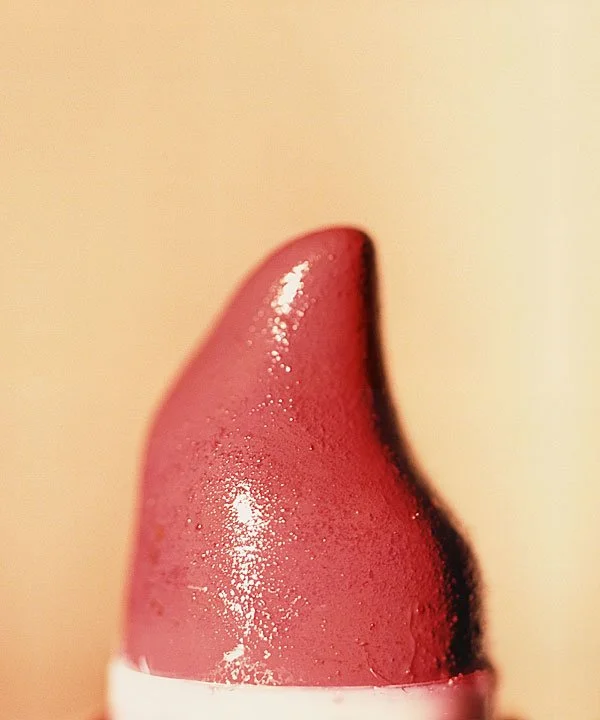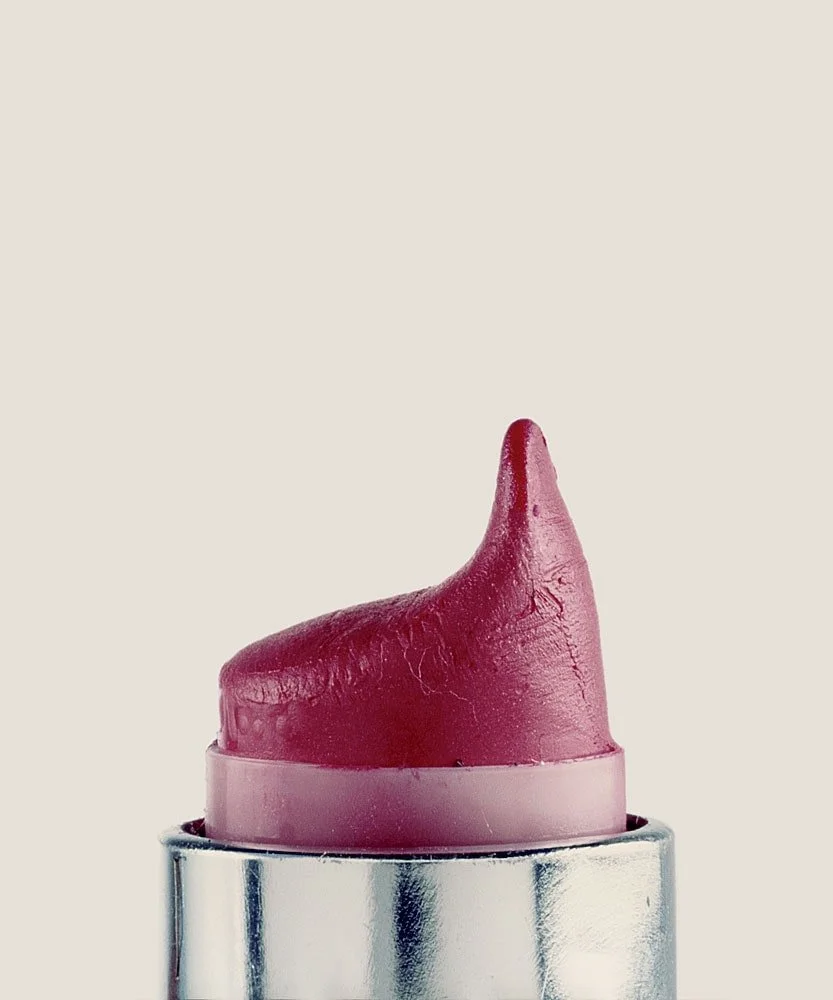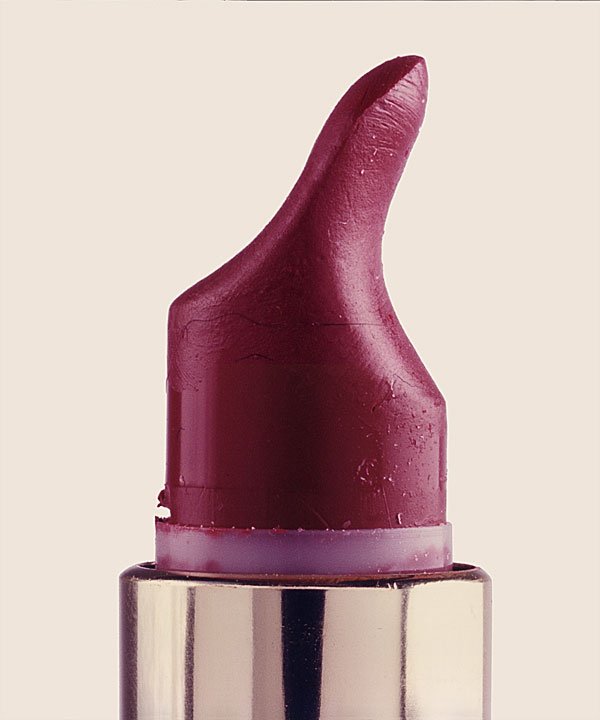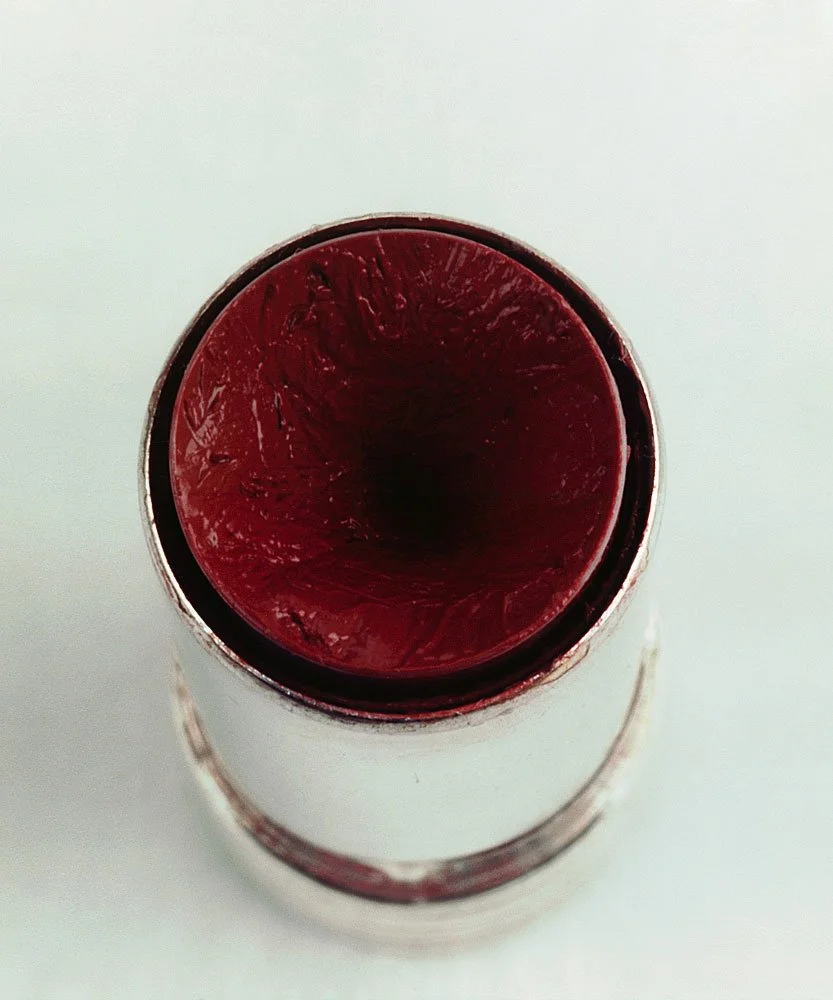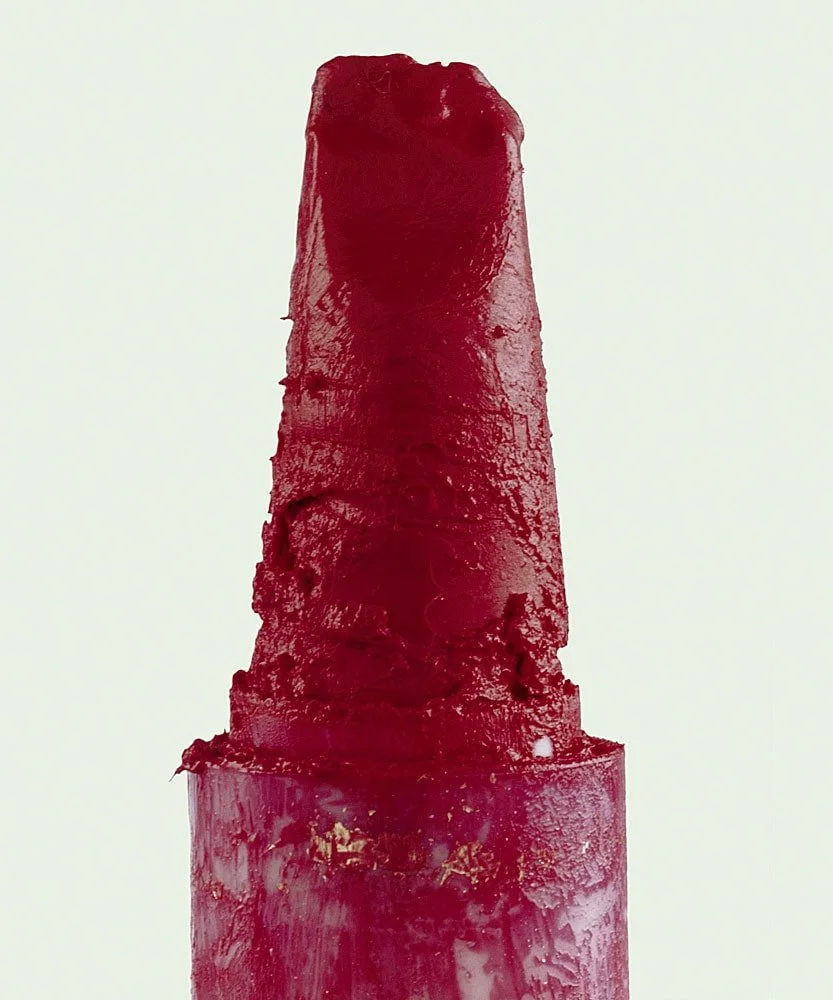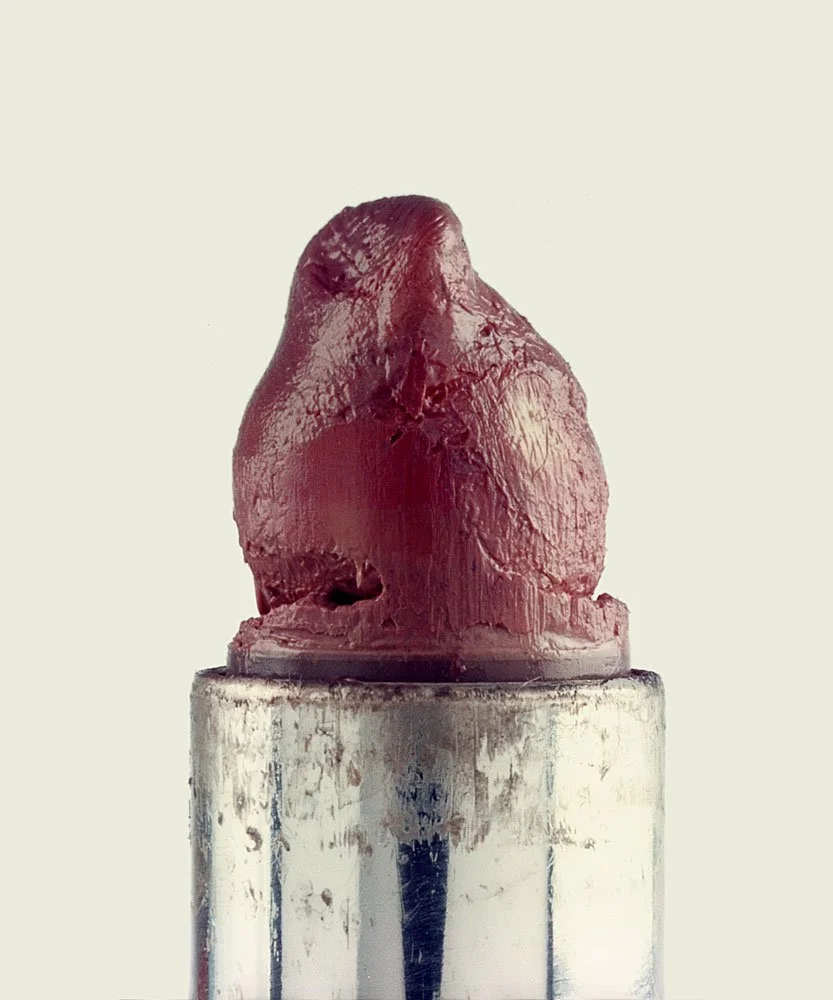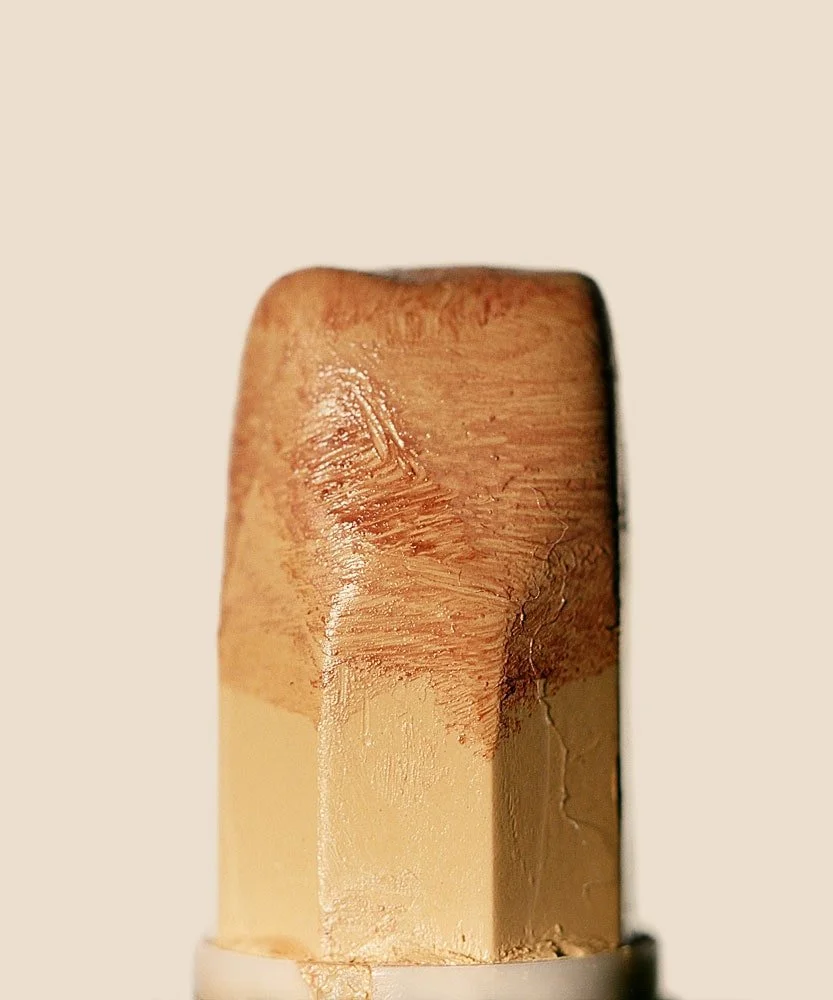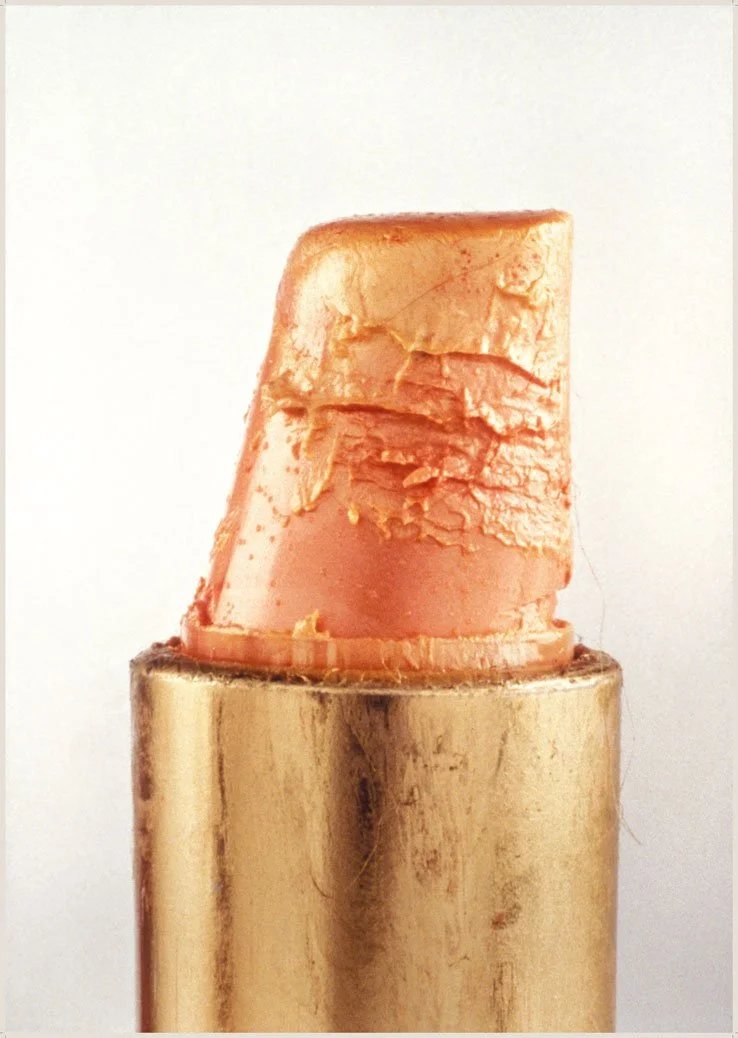This Stacy Greene Series Showcases How Different Women Apply Lipstick
If you were asked the question “What does one’s lipstick say about them?” what criteria would you think to measure by? Color and finish? Perhaps brand or style of packaging? American multidisciplinary artist Stacy Greene took a completely different approach in her 1992 photography series “Lipsticks,” where she brings to light the many possibilities in technique of application. Some images in the series have reminded many a viewer of lipsticks rolling around their purses or vanity drawers, while others have gone viral for shocking and amusing viewers with their unorthodox shapes and conditions.
Read on to find out how an everyday occurance following a visit to an NYC art exhibition inspired this entire series.
Stacy Green with “Lipsticks, 1992”
The Tube that Started It All
Greene was inspired to create this series after a night at the Whitney Biennial. Her friend Rosie dropped a tube of lipstick from her purse, which Greene helped her pick up. On inspection of the lipstick, she remarked its unique shape.
Greene has joked, “Rosie’s lipstick excited me more than anything I had seen at the Whitney.”
This single tube of lipstick made Green curious as to the status of the current lipsticks being used by her other friends. And thus “Lipsticks, 1992” was born. The series includes up-close photographs of 28 tubes of lipstick, varying in finish, level of use, and condition, including one of Green’s own tubes.
Lets review the rest of the images, to asses what patterns and methods of use we can detect.
The Slanted Variety
When you think of a used lipstick, the first shape that comes to mind is a slanted tip, in keeping with the original shape. Standard lipsticks come with that shape of tip fresh from the manufacturer to lend itself to the cupid’s bow, and allow for accurate lining of the lips. So in a vague sense, there’s something very standard or ordinary to the way the following lipsticks have been applied.
However to write these images off as all the same would be a huge oversight. While these users have all decided to apply their lipsticks roughly along the lines of the manufacturer slant, they all come out to different slope shapes, degrees to their slopes and shape of the tips.
When I was in high school and college, my lipsticks often looked like Linda’s. Yet over the past few years, I have noticed that my used lipsticks now resemble that of Brenda and Stacy. I suppose I am now more focused on maintaining the tip of the tube for better accuracy in application.
The Flat Variety
This next grouping of images have a flat appearance to them. I personally have never had a lipstick look like any of these, as I have an incredibly pronounced cupid’s bow and require the guidance of a slanted tip!
Once in a while you do come across a company that produces their lipsticks with a flat tip if they’re meant to merely add moisture or a tint of color, but I believe that much of this comes from application via a brush. There is variation in how flat or round the user left the tip.
The Dual-Sided Variety
The next style of lipstick is a dual-sided application. The user has clearly used two opposite sides of the tube, which has created a slanted point with a very acute angle.
I can honestly say that I’ve never tried this approach, as I like to maintain the factory-made cut of the tube as long as possible. But it’s a very interesting idea! I’m wondering if the two slightly different angles gives the user more options for accuracy. Perhaps how thin the tip of the lipstick becomes makes it more pleasant to apply. It appears to me that Jean had a taller and very thin tip developing before it broke off. I wonder how much of this approach is meant to be a challenge for the user to create a narrow tip for the fun of it.
The Sculptural Variety
This brings me to the next variety: The sculpted looks. These lipsticks remind me of clay on a potter’s wheel. Their shapes are so organic, and they appear so glossy, that it makes you feel like you could reach out and completely reshape them with the slightest touch.
Some of these appear to just be a unique angle at which the product is being applied, while others look like deliberate shaping from the use of a brush over time. Of all of the images in this series, the one I’ve seen garner the most discussion is Ellen’s. The corkscrew appearance to her product is unlike any other shape in this series, garnering comments like “I want whatever Ellen is on” and “Ellen is on a whole other level.” I’d be so curious to find out if Ellen had done this with most lipsticks or just this one in particular, and if she ended up using this lipstick up completely, or retired it after the corkscrew shape was to her liking.
The Well-Loved Variety
If you’ve ever browsed a vintage clothing store or gone through someone’s collection of old childhood toys, you know that the pieces with the most wear and tear were in many cases the most loved or utilized. And the same can be said about the following set of lipsticks.
Some have smears, stains and wear that are a result of application. While others appear to have experienced damage from being dropped or smashed. And the choice to keep them in these states feels very deliberate. When it comes to a lipstick you love or have invested in, you don’t let a smear of it go to waste.
Amy has gone with the economical approach of using the lipstick down to its base, and then using a brush to remove every last bit of product from the inside of the tube. This process - while tedious - can potentially stretch your use of a lipstick for several more weeks. Magdelyn’s lipstick tells the story of layering. It’s clear that she has recently layered this beige color over a dark red lipstick.
Final Thoughts
I love series like this, which put a literal lens on everyday life. Some art works to show us how people how much we have in common with each other. But I like the idea of seeing art that shows us something unique that we or other people do. The simplest ritual that acts as a common denominator among subjects can expose different needs, preferences and thought processes. The question that comes to mind when I look at this series is: If Stacy Greene applied lipstick in the exact same fashion as her friend, would she not have batted an eye at the exposed tube that fateful night at the Whitney?
Finally, I’m curious as to which images your current lipsticks most resemble! I’d say that on average my lipsticks look like Brenda’s. And by the end, they all end up looking like Amy’s.
Until we meet again!

